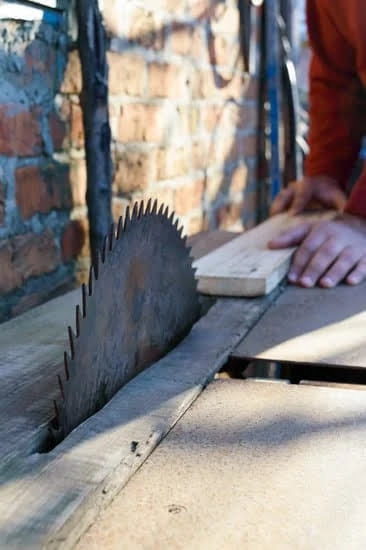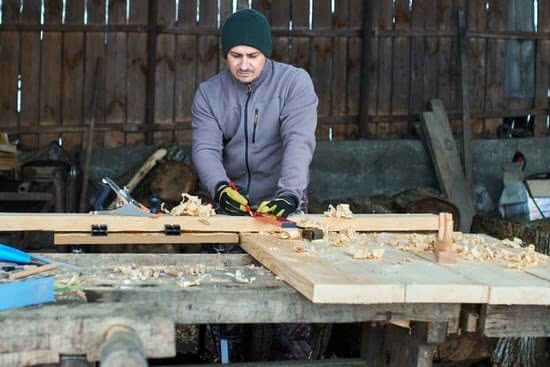Woodworking projects require precision and a secure hold to ensure that pieces are properly aligned and glued together. This is where woodworking clips come in. A woodworking clip is a tool designed to hold pieces of wood in place during the construction process, providing stability and accuracy. Whether you are a beginner or an experienced woodworker, understanding the importance of using woodworking clips can greatly enhance the outcome of your projects.
The primary importance of woodworking clips lies in their ability to improve accuracy and efficiency. When working with multiple pieces or intricate designs, it can be challenging to hold everything in place manually. Woodworking clips provide a firm grip, ensuring that the pieces do not move or shift while you work with them. This allows for more precise placement and alignment, resulting in higher quality finished products.
There are different types of woodworking clips available for various applications. Spring clamps, bar clamps, C-clamps, and many other variations offer different levels of grip strength and overall functionality. Depending on the specific task at hand, selecting the right type of clip can greatly streamline your workflow and enhance your productivity.
In order to choose the most suitable woodworking clip for your project, factors such as material, size, and design must be considered. The material determines durability and resistance to wear and tear, while the size ensures compatibility with your workpieces. Additionally, considering the design features like quick-release mechanisms or adjustable jaws can significantly impact ease of use.
By understanding how to properly use woodworking clips through step-by-step guides and learning from common mistakes made by others, you can maximize their effectiveness. Furthermore, exploring creative alternatives to traditional clips through DIY methods opens up new possibilities for securing pieces without compromising stability.
To help you make informed decisions when purchasing woodworking clips, this article also provides reviews and recommendations on some of the best brands and products available on the market today. No matter what level of expertise you possess as a woodworker, having essential tools like woodworking clips at your disposal can enhance the precision, efficiency, and overall quality of your projects.
Benefits of Using Woodworking Clips in Woodworking Projects
Woodworking clips are essential tools in any woodworking project. They provide a wide range of benefits, including improved accuracy and efficiency. Here are some key advantages of using woodworking clips in your woodworking projects:
1. Improved Accuracy: Woodworking clips help to securely hold pieces of wood together, ensuring that they stay in place during the various stages of the project. This is particularly important when you are joining two pieces of wood together or when you need to align them correctly for precise cuts or measurements. The clips prevent any shifting or movement, resulting in more accurate and precise work.
2. Enhanced Efficiency: Using woodworking clips can significantly speed up the construction process by streamlining various tasks. These clamps allow you to hold multiple pieces together while you work on them simultaneously, eliminating the need for constantly readjusting and repositioning the wood. This not only saves time but also reduces the risk of mistakes or errors due to constant handling.
3. Provides Stability and Support: Woodworking clips create a stable and secure grip on the pieces being worked on, providing support throughout the entire project. They help to prevent unwanted movement or shifting that could compromise the integrity of your workpiece. By holding everything firmly in place, woodworking clips enable you to focus on the task at hand without worrying about pieces moving around.
In addition to these benefits, woodworking clips come in various types to suit different project requirements. Spring clamps are lightweight and easy to use, making them ideal for small-scale projects or delicate materials. Bar clamps offer a longer reach and superior gripping power for larger projects that require extra stability. C-clamps have adjustable jaws that can be tightened onto different thicknesses of wood, providing versatility and flexibility in their application.
When choosing woodworking clips, it is essential to consider factors such as material, size, and design. The material should be durable enough to withstand pressure and repetitive use, such as steel or aluminum. The size of the clip should match the dimensions of your project, ensuring a secure fit. Additionally, the design should be ergonomic and easy to operate for comfortable handling during prolonged use.
To use woodworking clips effectively, it is important to follow a step-by-step guide for proper application. Start by selecting the appropriate clip for your project and ensure that it is clean and free from any debris that could compromise its gripping ability. Position the clip on the desired area of the wood and tighten it securely without exerting excessive force. Make any necessary adjustments to align the pieces correctly before proceeding with your woodworking tasks.
While using woodworking clips can greatly improve accuracy and efficiency, there are some common mistakes that should be avoided for optimal performance. One mistake is over-tightening the clips, which can cause damage to both the wood and the clip itself.
It is important to find a balance between a secure grip and not exerting too much pressure. Another common error is neglecting to remove the clips after they have served their purpose, which can result in glue marks or unwanted impressions on the wood surface.
In summary, woodworking clips are invaluable tools for woodworkers of all levels. They provide improved accuracy by securely holding pieces together during construction. They also enhance efficiency by streamlining tasks and reducing handling time. By choosing the right type of clip and properly applying it, you can achieve better results in your woodworking projects while avoiding common mistakes that may compromise your workpiece’s integrity.
Different Types of Woodworking Clips
There are several different types of woodworking clips available, each with its own unique features and applications. These clips play a crucial role in securing pieces of wood together during woodworking projects, ensuring accuracy and efficiency. Here are some of the most common types of woodworking clips:
- Spring Clamps: Spring clamps, also known as pinch clamps or hand clamps, are a popular choice for many woodworkers due to their simplicity and versatility. They feature a spring-loaded mechanism that allows for quick and easy one-handed operation. Spring clamps are typically used for light-duty applications and can be easily adjusted to accommodate different thicknesses of wood.
- Bar Clamps: Bar clamps, also known as F-clamps or sliding clamps, are designed for clamping larger pieces of wood. They consist of a long bar with a sliding jaw that can be easily adjusted to apply pressure evenly across the workpiece. Bar clamps are available in various sizes and lengths, making them suitable for a wide range of woodworking projects.
- C-Clamps: C-clamps, as the name suggests, have a distinctive C-shaped design that allows them to provide strong and secure clamping force. They are often used when working on smaller projects or when additional pressure is required in specific areas. C-clamps come in different sizes and configurations to accommodate various woodworking needs.
- Pipe Clamps: Pipe clamps utilize standard metal pipes as their bars, making them highly versatile and customizable. They feature large screw heads that allow for easy tightening and loosening by hand or with a wrench. Pipe clamps can be extended by adding longer pipes if necessary, making them ideal for larger-scale woodworking tasks.
Aside from these common types mentioned above, there are other specialized woodworking clips available such as corner clamps, band clamps, toggle claps, parallel jaw clamps, among others. Each type serves its specific purpose and offers unique benefits, allowing woodworkers to choose the best option for their particular project.
| Type of Woodworking Clip | Key Features |
|---|---|
| Spring Clamps | Spring-loaded mechanism for easy one-handed operation. Suitable for light-duty applications. |
| Bar Clamps | Long bar with sliding jaw for clamping larger pieces of wood. Adjustable and available in various sizes and lengths. |
| C-Clamps | C-shaped design for strong clamping force. Used for smaller projects or when additional pressure is required. |
| Pipe Clamps | Utilize metal pipes as bars, allowing for customization and extension. Versatile and suitable for larger-scale tasks. |
Factors to Consider When Choosing Woodworking Clips
Woodworking clips are an essential tool for any woodworker, as they provide the necessary support and stability during woodworking projects. However, not all woodworking clips are created equal, and it is important to consider several factors when choosing the right clips for your project. This section will discuss the key factors to consider: material, size, and design.
Material
When choosing woodworking clips, the material they are made of is a crucial consideration. The most common materials used in woodworking clips are steel and aluminum. Steel clips offer durability and strength, which makes them suitable for heavy-duty projects or when a high clamping force is required. On the other hand, aluminum clips are lighter in weight and can be more convenient for smaller projects or when working with delicate materials.
It is also important to consider the surface of the clip that comes into direct contact with your workpiece. Many woodworking clips have rubber or silicone pads that prevent damage to the wood while providing a secure grip. These pads also help to distribute the clamping force evenly, reducing the risk of indentation or warping.
Size
Choosing the right size of woodworking clips depends on the scale of your project as well as the thickness of the material you are working with. Clips that are too small may not provide enough clamping force, while oversized clips may be cumbersome to use and may not effectively hold smaller pieces in place.
Consider both the length and width of the jaws when selecting woodworking clips. Longer jaws allow for a larger clamping capacity, which can be helpful when working with larger pieces of wood. However, keep in mind that longer jaws may also require more clearance space around your workpiece.
Design
Woodworking clips come in various designs that cater to different needs and preferences. Some common designs include bar clamps, spring clamps, C-clamps, pipe clamps, and quick-grip clamps. Each design has its own unique features and advantages.
Bar clamps, for example, offer a longer reach and greater versatility due to their sliding jaw mechanism. Spring clamps are compact and easy to use, making them suitable for smaller projects or as auxiliary clamps. C-clamps provide strong and steady pressure, making them well-suited for heavy-duty woodworking tasks.
Consider the specific requirements of your project when choosing the design of your woodworking clips. Think about the accessibility of the clamp within your workspace, as well as any additional features that may enhance your efficiency and ease of use.
By carefully considering the material, size, and design of woodworking clips, you can ensure that you choose the right ones for your specific needs. Remember that different projects may require different types or sizes of clips, so it is useful to have a variety on hand. With the right woodworking clips in your toolkit, you will be able to achieve precise and secure clamping throughout all stages of your woodworking projects.
How to Use Woodworking Clips
Woodworking clips are an indispensable tool for any woodworker, as they help secure pieces of wood in place during projects. Whether you are constructing furniture, building cabinets, or simply working on a small DIY project, knowing how to properly use woodworking clips is essential for achieving accurate and efficient results. In this section, we will provide a step-by-step guide on the proper application of woodworking clips.
Step 1: Prepare the work surface
Before using woodworking clips, it is important to ensure that your work surface is clean and free of any debris that may interfere with the clamping process. Remove any excess dust or sawdust using a brush or compressed air.
Step 2: Position the piece
Next, position the piece of wood that needs to be secured in place. Make sure it is aligned correctly with the desired location before proceeding to the next step.
Step 3: Choose the right clip
Select an appropriate woodworking clip based on your project’s requirements. There are various types available, including spring clamps, bar clamps, C-clamps, and more. Consider factors such as the size of the piece being clamped and the amount of pressure needed when choosing a clip.
Step 4: Attach the clip
Once you have chosen the right clip, place it near the edge of the wood piece that needs to be secured. Ensure that both jaws of the clip are in contact with solid surfaces to provide optimal grip.
Step 5: Apply pressure
With one hand holding onto the handle or lever of the clip, use your other hand to apply downward force on top of the movable jaw. This will tighten and secure the grip between the two jaws, firmly holding your workpiece in place.
Step 6: Check alignment and adjust if necessary
After applying pressure with your woodworking clip(s), take a moment to check the alignment of your workpiece. If adjustments are needed, release some pressure by loosening the clip and make the necessary changes. Once the alignment is correct, reapply pressure with the woodworking clip(s) to secure it firmly in place.
By following this step-by-step guide, you can effectively use woodworking clips to secure your pieces in place during various projects. Remember, practice makes perfect, so don’t be discouraged if you encounter some difficulties at first. With time and experience, you will become more proficient in using woodworking clips for optimal results in your woodworking projects.
Common Mistakes to Avoid When Using Woodworking Clips
Woodworking clips are important tools in woodworking projects as they help to secure pieces of wood together, ensuring accuracy and efficiency in the overall process. However, there are common mistakes that woodworkers can make when using these clips that can affect their performance. In this section, we will discuss some tips and tricks to avoid these mistakes and achieve optimal performance when using woodworking clips.
One common mistake is applying too much pressure when clamping the wood pieces together. While it may seem intuitive to tighten the clip as much as possible for a secure hold, excessive pressure can actually distort the shape of the wood and affect its appearance.
It is important to find a balance between sufficient pressure to hold the pieces together securely and avoiding over-clamping. This can be achieved by adjusting the tension of the clip gradually until the desired level of tightness is reached.
Another mistake to avoid is using woodworking clips on delicate or thin materials without proper precautions. Thin pieces of wood are more susceptible to damage from excessive clamp pressure or pointy surfaces on the clip. To prevent any damage, it is advisable to use protective padding such as scraps of cardboard or cloth between the clip jaws and the wood surface. This will help distribute the pressure evenly and protect delicate materials from getting crushed.
Additionally, it is crucial not to rely solely on woodworking clips for stability when working with large or heavy wood pieces. While these clips offer a good amount of holding force, they may not be enough to prevent slipping or movement during certain tasks such as planing or cutting. To ensure optimal performance, it is recommended to use additional methods of securing large pieces, such as bracing them against a workbench with clamps or adding support blocks underneath.
By avoiding these common mistakes and following these tips and tricks, woodworkers can maximize the effectiveness and performance of woodworking clips in their projects. These simple precautions will help preserve the quality of their workpieces while improving overall accuracy and efficiency in their woodworking endeavors.
DIY Woodworking Clip Alternatives
Woodworking clips are essential tools for securing pieces in woodworking projects. However, there may be instances where traditional clips are not available or suitable for the task at hand. In such cases, it is helpful to know alternative methods for securing pieces in woodworking projects. This section will explore some creative DIY woodworking clip alternatives that can be used in a pinch.
One alternative to traditional clips is using bungee cords or rubber bands. These elastic materials can be stretched and wrapped around the workpiece to hold it firmly in place. Bungee cords are particularly useful when working with irregularly shaped objects or when a strong grip is required.
Another DIY clip alternative is utilizing wedges or shims made from scrap wood. By inserting these wedges between the workpiece and another stable surface, such as a table or wall, you can create enough pressure to hold the piece securely in place. This method can be especially effective when working with pieces that are too small or irregularly shaped to be held by traditional clips.
Furthermore, woodworking clamps can also serve as makeshift clips if traditional clips are not available. While not specifically designed as clips, many clamps have features that allow them to be used in a similar manner. For example, pipe clamps can be positioned perpendicular to the edge of a workpiece and tightened down to hold it securely during assembly.
Several other creative solutions exist to substitute traditional woodworking clips when needed. By thinking outside the box and utilizing common household items or repurposing tools meant for other tasks, woodworkers can find numerous ways to secure their pieces without relying solely on traditional clips.
| DIY Woodworking Clip Alternatives | Description |
|---|---|
| Bungee Cords/Rubber Bands | Elastic materials that can be stretched and wrapped around the workpiece for a firm hold |
| Scrap Wood Wedges/Shims | Inserting wedges made from scrap wood between the workpiece and a stable surface to create enough pressure for a secure hold |
| Woodworking Clamps | Clamps can be repurposed to function as makeshift clips by positioning them in a manner that secures the workpiece during assembly |
Reviews and Recommendations
When it comes to woodworking clips, there are a variety of brands and products available on the market. Choosing the best ones for your projects can be overwhelming, but fear not. We have narrowed down some of the top woodworking clip brands and products that you should consider.
Kreg
Kreg is a well-known brand in the woodworking industry, offering a wide range of high-quality woodworking clips. Their clamps are known for their durability and ease-of-use. The Kreg Automaxx Bar Clamps, for example, are designed with innovative technology that adjusts the clamping pressure automatically based on the thickness of the wood being secured. This makes them versatile and convenient to use for a variety of projects.
Bessey
Bessey is another reputable brand that manufactures exceptional woodworking clips. Their clamps are known for their strong grip and precision. One popular product from Bessey is the Bessey Revo Parallel Clamp. These clamps provide even pressure along the entire length of the jaw, minimizing distortion and ensuring accurate results. They also feature removable pressure caps, allowing you to customize them to suit different project requirements.
Jorgensen
Jorgensen is a trusted name in woodworking tools, including their range of reliable woodworking clips. Their Jorgensen Cabinet Master Parallel Jaw Bar Clamps are highly regarded by woodworkers worldwide. These clamps have patented parallel jaws that evenly distribute pressure across the work surface, making them ideal for large-scale projects where accuracy is crucial.
When choosing woodworking clips, it is important to consider factors such as material, size, and design. Each brand mentioned above offers various options in terms of these factors to cater to different project needs. It is advisable to read customer reviews and compare features before making a purchase decision.
Conclusion
In conclusion, woodworking clips are essential tools for woodworkers of all levels. They offer improved accuracy and efficiency in woodworking projects by securely holding together pieces of wood, allowing for precise and controlled work. The different types of woodworking clips, such as spring clamps, bar clamps, and C-clamps, provide versatility in gripping surfaces of various sizes and shapes.
When choosing woodworking clips, factors like material, size, and design should be considered. The material should be strong and durable to withstand the pressure applied during clamping. The size should match the project requirements to ensure a proper grip. Additionally, the design should allow for easy adjustment and tightening.
Proper application of woodworking clips is crucial for effective use. Following a step-by-step guide ensures that the clips are used correctly to hold the wood securely in place. Avoiding common mistakes, such as over-clamping or relying on clips alone for stability, will contribute to optimal performance.
For those looking for alternatives to traditional woodworking clips, there are creative DIY options available. These alternatives can provide unique solutions while maintaining the functionality needed to secure wood pieces together.
Finally, reviews and recommendations can guide woodworkers in selecting the best brands and products on the market. Hearing from experienced professionals or fellow hobbyists can help find high-quality woodworking clips that meet individual needs.
In summary, whether you are a beginner or an experienced woodworker, having woodworking clips in your arsenal is vital. Their ability to improve accuracy and efficiency makes them essential tools for any woodworking project. By considering factors like material and size when selecting clips and avoiding common mistakes during their use, woodworkers can fully leverage their benefits for successful projects.
Frequently Asked Questions
What clamps should a woodworker have?
A woodworker should have a variety of clamps in their toolkit to ensure they can effectively secure materials during woodworking projects. One essential clamp is the pipe clamp, which consists of a long metal bar and adjustable jaws that can be tightened using a threaded rod. Pipe clamps are versatile and can be used for both small and large-scale projects.
Another useful clamp is the parallel clamp, which has two flat jaws that remain parallel while applying pressure and is ideal for gluing panels or large surfaces together. Additionally, having several spring clamps, also known as hand clamps, is beneficial for holding smaller pieces or delicate materials in place quickly.
Are bar clamps good for woodworking?
Bar clamps are highly regarded within the woodworking community for their versatility and strength. These clamps consist of a long metal bar with an adjustable jaw that slides along its length to accommodate different sizes of materials. The jaw can be locked into place with a handle or crank mechanism, providing excellent holding power.
Bar clamps are particularly useful when gluing larger pieces or when you need to exert significant pressure to keep materials firmly together during drying time. They are favored by many woodworkers due to their ability to evenly distribute pressure along the entire length of the clamp.
What is a carpenters clamp?
A carpenter’s clamp, often referred to as C-clamp or G-clamp, is a common type of clamp used in woodworking and general carpentry tasks. It features a fixed jaw shaped like the letter “C” attached to a screw mechanism that allows adjustment and tightening of the movable jaw against the workpiece being secured.
Carpenter’s clamps are ideal for holding objects firmly in place while other operations such as drilling, sawing, or sanding are performed on them since they provide a secure grip without damaging the surface. They come in various sizes and shapes to cater to different needs within woodworking, making them an essential tool in any woodworker’s arsenal.

Hi everyone! I’m a woodworker and blogger, and this is my woodworking blog. In my blog, I share tips and tricks for woodworkers of all skill levels, as well as project ideas that you can try yourself.





